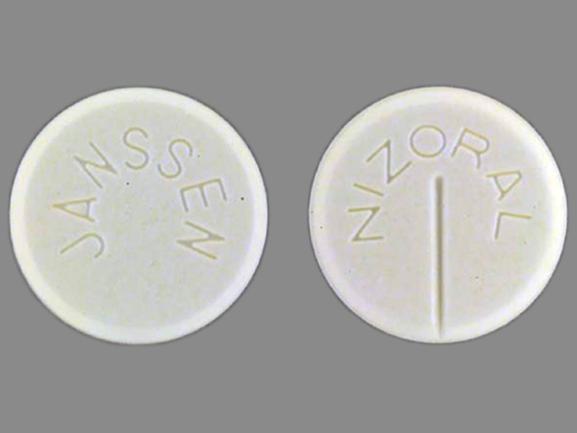Nizoral and Alcohol/Food Interactions
There is 1 alcohol/food/lifestyle interaction with Nizoral (ketoconazole).
Ketoconazole Food/Lifestyle
Moderate Food Interaction
GENERALLY AVOID: Excessive use of alcohol or products containing alcohol together with ketoconazole or levoketoconazole may potentiate the risk of liver injury. Serious hepatotoxicity has been reported with levoketoconazole. Hepatotoxicity requiring liver transplantation has been reported with the use of oral ketoconazole, of which levoketoconazole is an enantiomer. Some patients had no obvious risk factors for liver disease. In addition, use of alcohol or products containing alcohol during ketoconazole or levoketoconazole therapy may result in a disulfiram-like reaction in some patients. Symptoms of disulfiram-like reaction include flushing, rash, peripheral edema, nausea, and headache.
GENERALLY AVOID: Coadministration with grapefruit juice may increase the plasma concentrations of ketoconazole or levoketoconazole. The mechanism is inhibition of CYP450 3A4-mediated first-pass metabolism in the gut wall by certain compounds present in grapefruits. Inhibition of hepatic CYP450 3A4 may also contribute. In general, the effect of grapefruit juice is concentration-, dose- and preparation-dependent, and can vary widely among brands. Certain preparations of grapefruit juice (e.g., high dose, double strength) have sometimes demonstrated potent inhibition of CYP450 3A4, while other preparations (e.g., low dose, single strength) have typically demonstrated moderate inhibition. Pharmacokinetic interactions involving grapefruit juice are also subject to a high degree of interpatient variability, thus the extent to which a given patient may be affected is difficult to predict.
When administered to healthy volunteers with a high-fat meal (875 calories; 62% fat), levoketoconazole systemic exposure (AUC) increased by 30% while peak plasma concentration (Cmax) did not change and the time to reach Cmax (Tmax) was delayed from 2 to 4 hours, compared to fasted conditions.
MANAGEMENT: Levoketoconazole may be administered with or without food. Excessive consumption of alcohol should generally be avoided during ketoconazole or levoketoconazole therapy. Patients should preferably avoid or limit consumption of grapefruit, grapefruit juice, or any supplement containing grapefruit extract during ketoconazole or levoketoconazole therapy. Patients receiving ketoconazole or levoketoconazole should be instructed to contact their doctor immediately if they experience swelling, skin rash, itching, loss of appetite, fatigue, nausea, vomiting, abdominal pain, dark colored urine, light colored stools, and/or yellowing of the skin or eyes, as these may be signs and symptoms of liver damage.
References (4)
- (2019) "Product Information. Ketoconazole (ketoconazole)." Mylan Pharmaceuticals Inc
- (2022) "Product Information. Recorlev (levoketoconazole)." Xeris Pharmaceuticals Inc
- Auchus R, Pivonello R, Fleseriu M, et al. (2022) Levoketoconazole: a novel treatment for endogenous Cushing's syndrome. https://www.tandfonline.com/doi/pdf/10.1080/17446651.2021.1945440
- (2021) "Product Information. Ketoconazole (ketoconazole)." Burel Pharmaceuticals Inc
Switch to consumer interaction data
Nizoral drug interactions
There are 864 drug interactions with Nizoral (ketoconazole).
Nizoral disease interactions
There are 4 disease interactions with Nizoral (ketoconazole) which include:
More about Nizoral (ketoconazole)
- Nizoral consumer information
- Check interactions
- Compare alternatives
- Reviews (4)
- Drug images
- Side effects
- Dosage information
- During pregnancy
- Drug class: azole antifungals
- Breastfeeding
Related treatment guides
Drug Interaction Classification
| Highly clinically significant. Avoid combinations; the risk of the interaction outweighs the benefit. | |
| Moderately clinically significant. Usually avoid combinations; use it only under special circumstances. | |
| Minimally clinically significant. Minimize risk; assess risk and consider an alternative drug, take steps to circumvent the interaction risk and/or institute a monitoring plan. | |
| No interaction information available. |
See also:
Further information
Always consult your healthcare provider to ensure the information displayed on this page applies to your personal circumstances.


